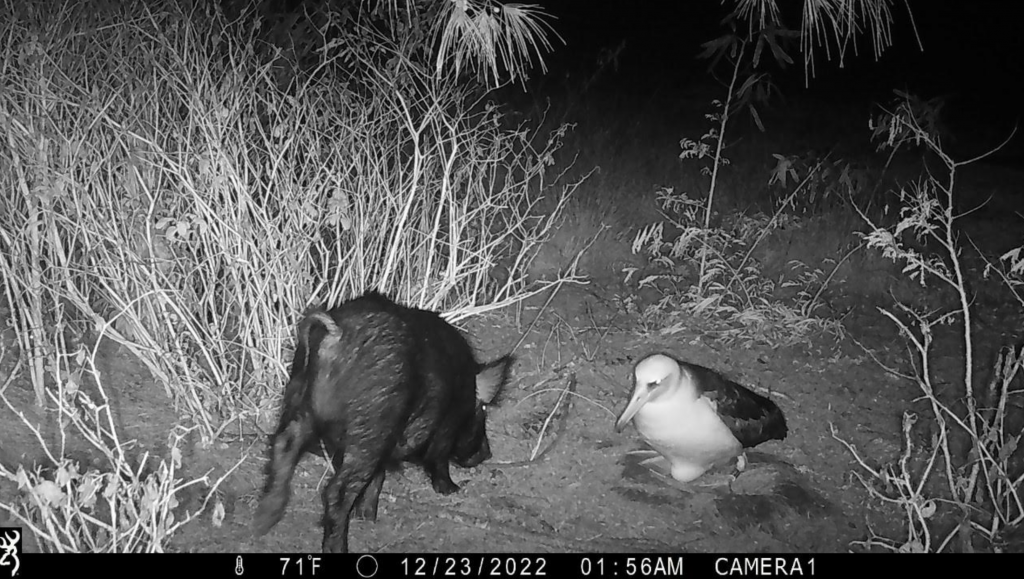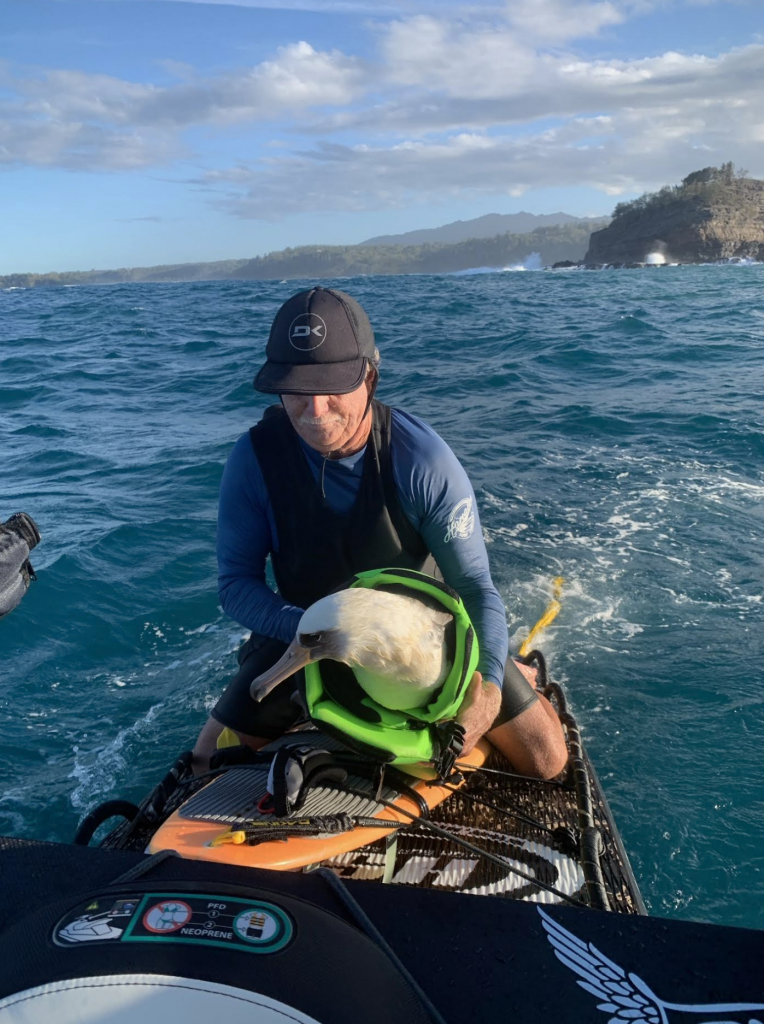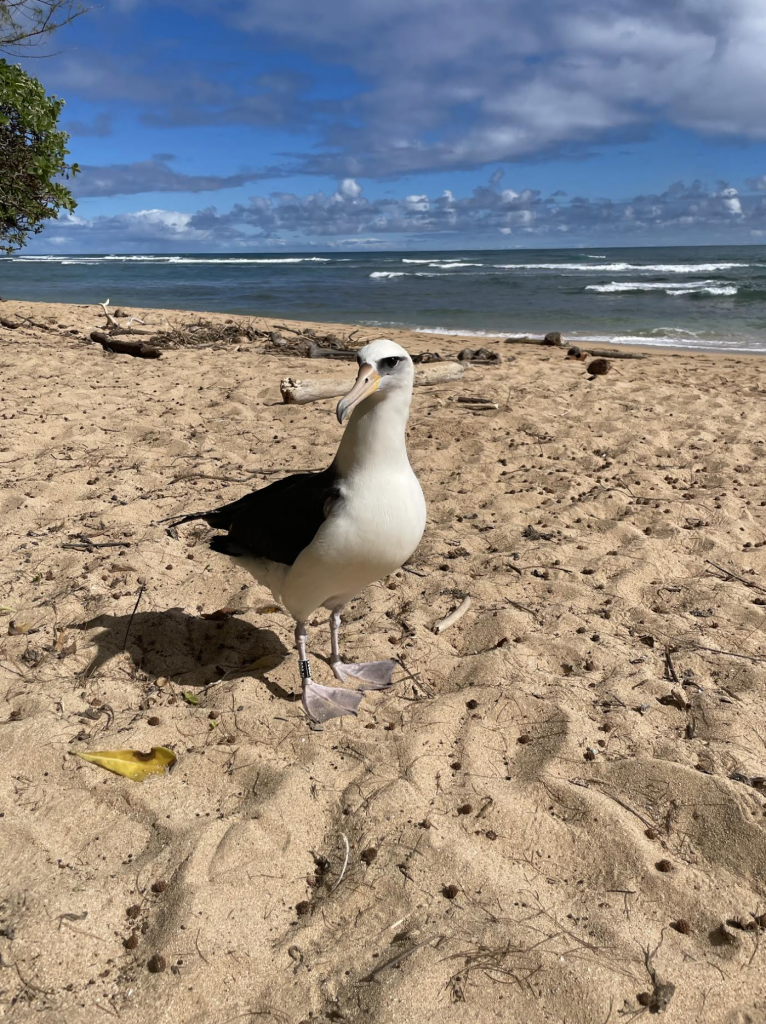Pigs destroy 62 albatross eggs at Kaua’i refuge nesting sites
On the Facebook page of Kīlauea Point National Wildlife Refuge on Kaua’i, it was reported that in late December 64 mōlī eggs were “crushed or eaten by pigs” on Nihokū.
This event in which pigs destroyed or ate dozens of eggs from nesting albatross is suspected as the cause of survival issues for at least one mōlī (Laysan Albatross).

On Dec. 26, a Laysan Albatros was rescued at the Kaua’i refuge when found waterlogged and struggling in waters. The rescuers were able to safely capture the albatross and bring her to the Kaiakea Fire Station, where Save Our Shearwaters staff collected the bird.
She was wearing leg band ANP081, which identified the albatros as an active nester who was last seen incubating an egg on Dec. 22 at the refuge.
Albatrosses lay just one egg at a time. Eggs take two months to hatch, and the chicks live at the nest for five months before they are ready to live on their own.
The refuge confirmed that ANP081’s nest was depredated by a pig and say the event is suspected to be the cause of the bird’s waterproofing issues. Wildlife officials say yolk from the bird’s destroyed egg would explain the light yellow substance found in her feathers.
“It was probably only a matter of minutes or hours before [the albatross] drowned,” said Howie Grene, one of the bird’s rescuers. “The wings were all out.”
Grene said the bird tried to keep afloat, with its head barely above water and its body submerged.
“It is vital that pelagic birds such as mōlī are completely waterproof prior to release,” said Jacqueline Nelson, Wildlife Rehabilitation Manager for Save Our Shearwaters. “Otherwise, water can reach their skin causing them to become hypothermic or have difficulty taking flight off the water and foraging for food.”
Because the patient albatros was an active nester, time was of the essence to get her back into the wild as quickly as possible, according to the organization.
Trained staff completed an extensive wash procedure to remove any contaminants from ANP081’s plumage. She spent two additional days at the rehabilitation facility, where staff monitored her buoyancy and checked to ensure her feathers remained dry while pooling. After passing her final waterproofing and health evaluations, she was released successfully at Anahola Beach on Jan. 2.
US Fish and Wildlife Service staff, in coordination with Pacific Rim Conservation, have been working to finish expanding their predator-resistant fencing to encompass the area where these mōlī nests are located. The fence is scheduled to be completed in just a few months.
Heather Abbey-Tonneson, Refuge Complex Manager, said Save Our Shearwaters also partners with Pacific Rim Conservation, Pono Pacific, State of Hawaiʻi Department of Land and Natural Resources, Kauaʻi Endangered Seabird Recovery Project and American Bird Conservation on the refuge’s nearly 2-mile predator-resistant perimeter fence that helps protect mōlī and other species on 168 acres.
“While ANP081 lost her egg and nearly her life due to an invasive predator, next year we hope she will return to her newly protected nesting site for a successful breeding season,” organization leaders said in a Save Our Shearwaters news release.
Sponsored Content
Comments
















